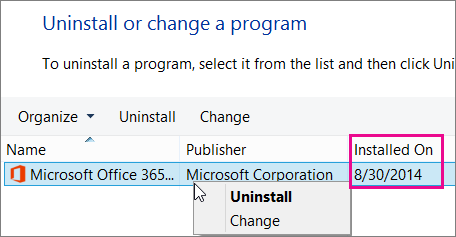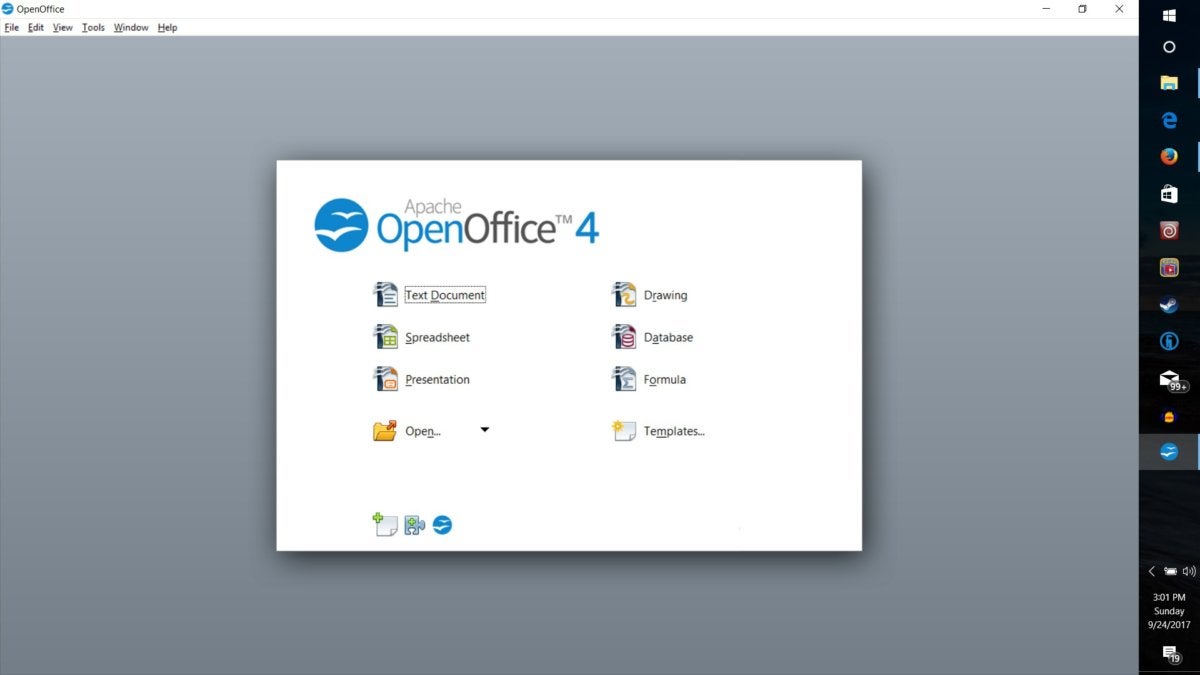- Speed Fix Tool For Mac
- Itool For Mac
- License Removal Tool Office Mac
- Office License Uninstall Tool Mac
- Online Repair Office On Mac

You can easily uninstall Office for Mac apps such as Word, Excel, PowerPoint, OneNote, and Outlook using these instructions. You must be signed in as an administrator on the Mac or provide an administrator name and password to complete these steps.
Speed Fix Tool For Mac
Outlook for Mac Outlook for Mac for Office 365 Outlook 2016 for Mac junk Outlook for Mac 2011 Custom Holidays MCL Database Rebuild Outlook for Mac build numbers Database Holidays File El Capitan 64-bit Utilities Office 2016 for Mac Junk email Safe Senders Blocked Senders Holiday junk filtering. Office 2016 for Mac comes in an installer package that has been causing several issues for Mac sysadmins deploying it in their organizations. At least a couple posts exist already for how to “fix” the installer and deploy the software, but I haven’t seen anyone actually detail some of these issues publicly. Choose I need help setting up my Office 365 email in Outlook. The Support and Recovery Assistant will run some checks, and when you're ready will create an Outlook profile with your email address. Download and start Support and Recovery Assistant. Go to the Support and Recovery Assistant for Office 365 download page. Click Download now. Microsoft’s Fix it tool for Office 2016 This tool completely removes Office 2013 or Office 2016 from your computer, it applies the repairs automatically. If this Fix it tool doesn’t completely uninstall or remove Office 2016, then follow the instructions on this page to manually get rid of it. If you're experiencing problems with Outlook or are having trouble installing Office apps, Microsoft Support and Recovery Assistant for Office 365 can help identify and fix several issues. New tool for helping resolve Office 365 issues By the Office team, on May 11, 2016 July 24, 2017 Office 365 is an extremely reliable service, with service availability that typically exceeds 99.9 percent.
You must be signed in as an administrator on the Mac or provide an administrator name and password to complete these steps.
Remove Office for Mac applications
Open Finder > Applications.
Command +click to select all of the Office for Mac applications.
Ctrl+click an application you selected and click Move to Trash.
Remove files from your user Library folder
In Finder, press +Shift+g.
In the window that opens, enter ~/Library and then click Go.
Open the Containers folder and ctrl+click each of these folders and Move to Trash. Note that some of these folders may not be present.
com.microsoft.errorreporting
com.microsoft.Excel
com.microsoft.netlib.shipassertprocess
com.microsoft.Office365ServiceV2
com.microsoft.Outlook
com.microsoft.Powerpoint
com.microsoft.RMS-XPCService
com.microsoft.Word
com.microsoft.onenote.mac
Warning: Outlook data will be removed when you move the three folders listed in this step to Trash. You should back up these folders before you delete them.
Click the back arrow to go back to the Library folder and open Group Containers. Ctrl+click each of these folders if present, and Move to Trash.
UBF8T346G9.ms
UBF8T346G9.Office
UBF8T346G9.OfficeOsfWebHost
Remove from Dock and restart
If you put any of the Office applications in your Dock, go to each one and ctrl + click > Options > Remove from Dock.
Restart your Mac to complete the uninstall.
Related Topics
Support for Office for Mac 2011 ended on October 10, 2017. All of your Office for Mac 2011 apps will continue to function. However, you could expose yourself to serious and potentially harmful security risks. Upgrade to a newer version of Office so you can stay up to date with all the latest features, patches, and security updates. |
To uninstall Office for Mac 2011 move the applications to the Trash. Once you've removed everything, empty the Trash and restart your Mac to complete the process.
Before you remove Office for Mac 2011, quit all Office applications and make sure there's nothing in Trash that you want to keep. Leave Office applications closed while you go through this process.
Uninstall Office for Mac 2011
Note: You must be signed in as administrator to do these steps, and you probably already are, if you're using your own Mac. If you're at a Mac that's part of a network at work, you might have to ask someone in your IT organization for help with signing in as administrator.
Remove the Microsoft Office 2011 folder
Open Finder > Applications
Find and then drag the Microsoft Office 2011 folder to Trash.
Restart your computer.
Related Topics
The Microsoft Support and Recovery Assistant works by running tests to figure out what's wrong and offers the best solution for the identified problem. It can currently fix Office, Office 365, or Outlook problems. If the Support and Recovery Assistant can't fix a problem for you, it will suggest next steps and help you get in touch with Microsoft support.
Click here to view steps on how to download and install the Support and Recovery Assistant
Click the button below to download the Support and Recovery Assistant.
Note: By downloading this app, you agree to the terms of the Microsoft Services Agreement and Privacy Statement
Follow the steps below to download the Support and Recovery Assistant according to your browser.
Tip: The tool may take a few minutes to download and install.
Edge or Internet Explorer
At the bottom of the browser window, select Run to launch the SetupProd.exe.
Chrome
In the lower-lower left corner right-click SetupProd.exe > Open.
Firefox
In the pop-up window, select Save File.
Next, from the upper-right of the FireFox browser window, select the downloads arrow and then select SetupProd.exe.
Read the Microsoft Services Agreement, and then click I agree.
Choose the app you are having problems with and click Next.
Choose the problem you're having from the list and click Next.
Follow the directions the Support and Recovery Assistant provides.
Frequently Asked Questions
Support and Recovery Assistant System Requirements
The following operating systems are supported:
Windows 10
Windows 8 and Windows 8.1
Windows 7
Outlook in any of the following Office versions can be scanned:
Microsoft Office 365 (2019, 2016, or 2013, 32-bit or 64-bit)
Microsoft Office 2019 (32-bit or 64-bit; Click-to-Run or MSI installations)
Microsoft Office 2016 (32-bit or 64-bit; Click-to-Run or MSI installations)
Microsoft Office 2013 (32-bit or 64-bit; Click-to-Run or MSI installations)
Microsoft Office 2010 (32-bit or 64-bit)
If you are running any edition of Windows 7, you must also have .NET Framework 4.5 installed. Windows 8 and later versions of Windows include at least .NET Framework 4.5.
Itool For Mac
Which problems can the Support and Recovery Assistant fix?
The Support and Recovery Assistant offers the best solution for these identified problems:
Office
I get an error when I install Office

I can't activate Office
I need to uninstall Office
Outlook
Outlook won't start
I can't setup my Office 365 email in Outlook
Outlook keeps asking for my password
Outlook keeps saying 'Trying to connect...' or 'Disconnected'
Shared mailboxes or shared calendars don't work
I'm having problems with my calendar
Outlook stops responding
Outlook keeps crashing
I can't send, receive, or find email
OneDrive for Business
I can't sync my files with OneDrive
I can't install OneDrive
Other Office apps
I can't sign into Skype for Business
I can't get email on my phone
I'm having trouble opening or signing in to Outlook on the web
I can't install, connect, or enable Dynamics 365 for Outlook
There are additional scenarios for Outlook on the web, Outlook for Mac, and Mobile devices, plus advanced diagnostics for Exchange Online and Outlook.
Do I need an account to use the Support and Recovery Assistant?
No. The following troubleshooting scenarios in the app can be run without a Microsoft account, or the work or school account you use with Office:
Office Uninstall
Office Setup
Office Activation
Outlook Advanced Diagnostics
License Removal Tool Office Mac
Can I install the Support and Recovery Assistant on my Mac?
We're sorry, but we don't have a version of the Support and Recovery Assistant that can be installed on a Mac. However, the Outlook for Mac scenario in the app can troubleshoot some issues that occur on your Mac even though the app is installed on a Windows PC.
Do I need an internet connection to use the Support and Recovery Assistant?
Yes. You'll need an internet connection to download, install, and use the Support and Recovery Assistant.

How do I uninstall the Support and Recovery Assistant?
Office License Uninstall Tool Mac
To uninstall the app from your computer, follow these steps:
Open the Control Panel.
Click Uninstall a Program.
Locate and select Microsoft Support and Recovery Assistant.
Click Uninstall/Change.
Select Remove the application from this computer, and then click OK.
How can I provide feedback for problems with or suggestions for the app?
Online Repair Office On Mac
When you reach the end of a scenario in the app you're shown a screen where you're asked if we fixed your problem. Select any of the top three options to have the remaining questions in the screen displayed. You can enter your feedback into the box at the bottom of the screen.